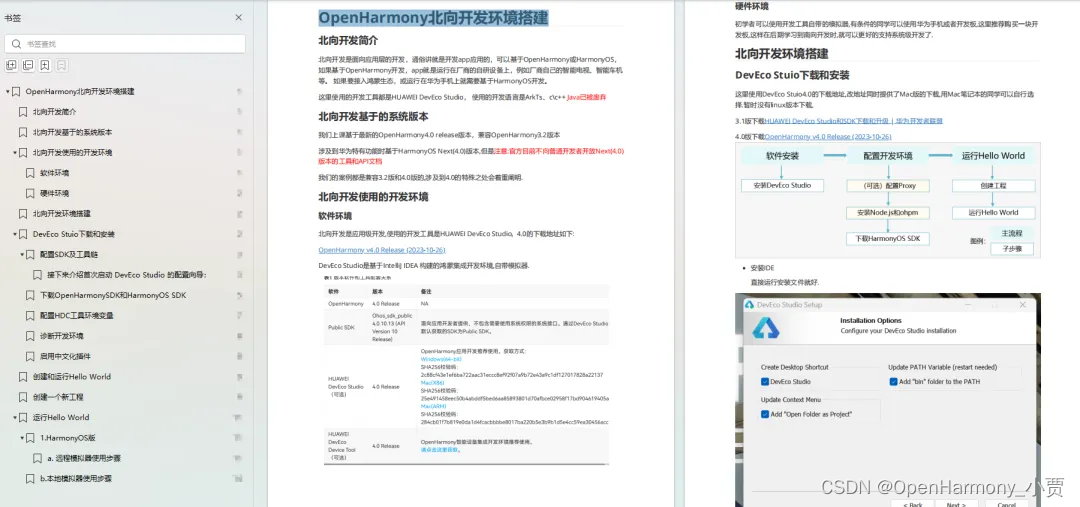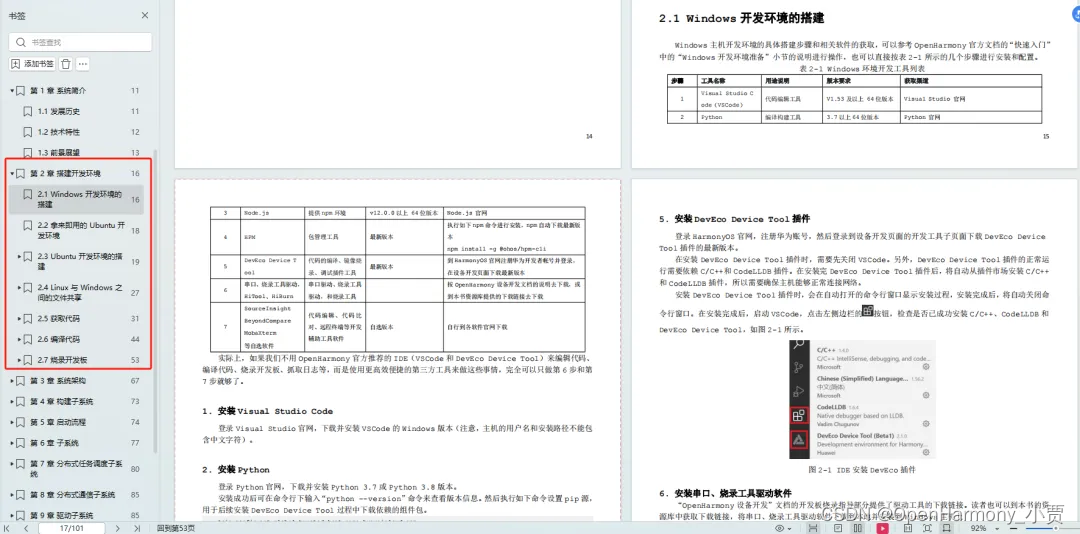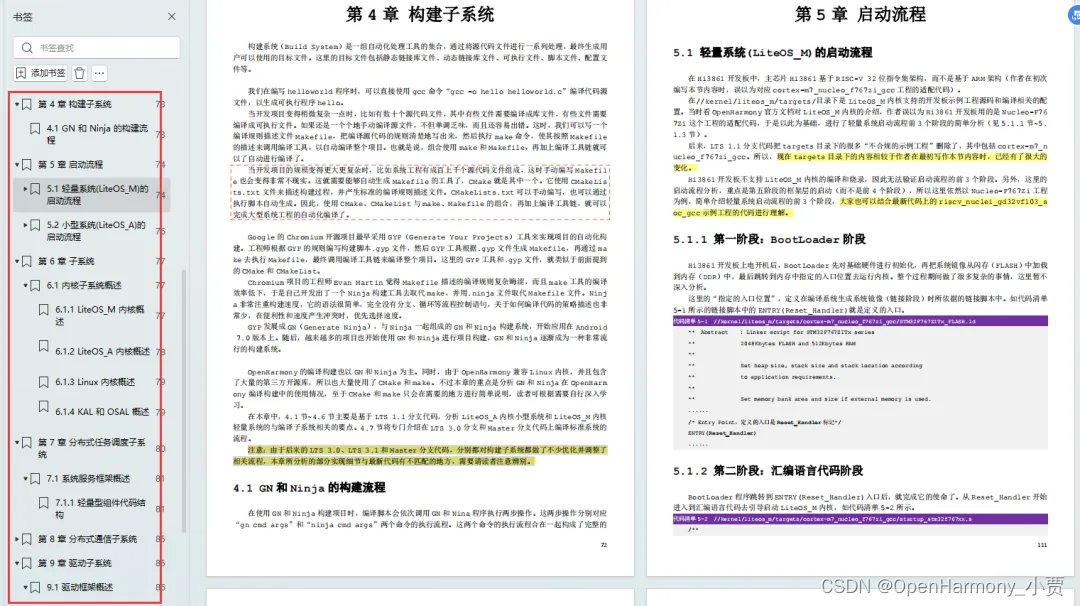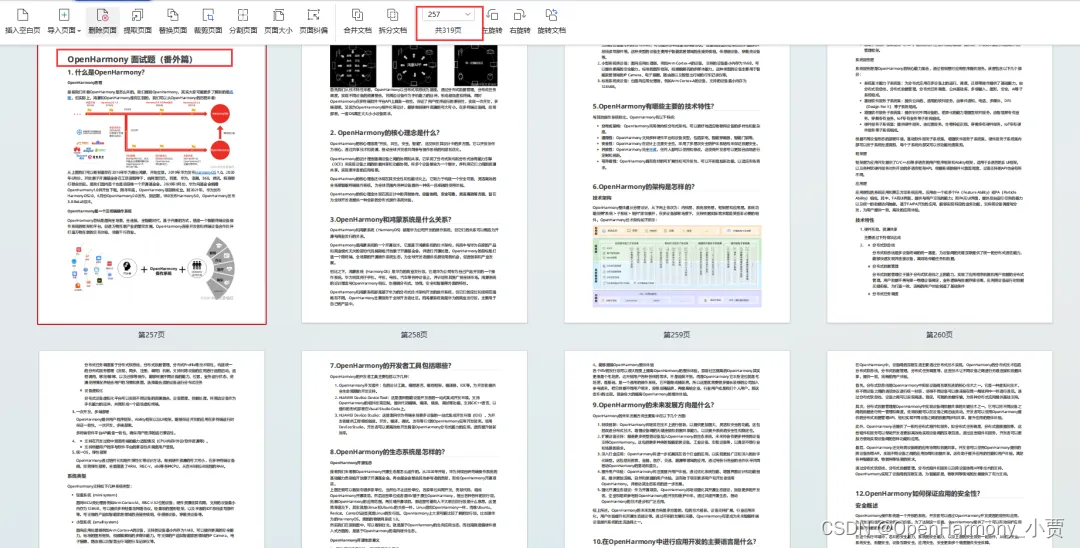00. 目录
01. 命令概述
Linux系统中grep命令是一种强大的文本搜索工具,它能使用正则表达式搜索文本,并把匹 配的行打印出来。grep全称是Global Regular Expression Print,表示全局正则表达式版本,它的使用权限是所有用户。
grep命令的选项用于对搜索过程的补充,而其命令的模式十分灵活,可以是变量、字符串、正则表达式。需要注意的是:一当模式中包含了空格,务必要用双引号将其引起来。
linux系统支持三种形式的grep命令,大儿子就是grep,标准,模仿的代表。二儿子兴趣爱好多-egrep,简称扩展grep命令,其实和grep -E等价,支持基本和扩展的正则表达式。小儿子跑的最快-fgrep,简称快速grep命令,其实和grep -F等价,不支持正则表达式,按照字符串表面意思进行匹配。
02. 命令格式
grep [options] PATTERN [FILE...]
grep [options] [-e PATTERN | -f FILE] [FILE...]
- 1
- 2
03. 常用选项
匹配模式选择:
-E, --extended-regexp 扩展正则表达式egrep
-F, --fixed-strings 一个换行符分隔的字符串的集合fgrep
-G, --basic-regexp 基本正则
-P, --perl-regexp 调用的perl正则
-e, --regexp=PATTERN 后面根正则模式,默认无
-f, --file=FILE 从文件中获得匹配模式
-i, --ignore-case 不区分大小写
-w, --word-regexp 匹配整个单词
-x, --line-regexp 匹配整行
-z, --null-data 一个 0 字节的数据行,但不是空行
杂项:
-s, --no-messages 不显示错误信息
-v, --invert-match 显示不匹配的行
-V, --version 显示版本号
--help 显示帮助信息
--mmap use memory-mapped input if possible
输入控制:
-m, --max-count=NUM 匹配的最大数
-b, --byte-offset 打印匹配行前面打印该行所在的块号码。
-n, --line-number 显示的加上匹配所在的行号
--line-buffered 刷新输出每一行
-H, --with-filename 当搜索多个文件时,显示匹配文件名前缀
-h, --no-filename 当搜索多个文件时,不显示匹配文件名前缀
--label=LABEL print LABEL as filename for standard input
-o, --only-matching 只显示一行中匹配PATTERN 的部分
-q, --quiet, --silent 不显示任何东西
--binary-files=TYPE 假定二进制文件的TYPE 类型;
TYPE 可以是`binary', `text', 或`without-match'
-a, --text 匹配二进制的东西
-I 不匹配二进制的东西
-d, --directories=ACTION 目录操作,读取,递归,跳过
-D, --devices=ACTION 设置对设备,FIFO,管道的操作,读取,跳过
-R, -r, --recursive 递归调用
--include=PATTERN 只查找匹配FILE_PATTERN 的文件
--exclude=PATTERN 跳过匹配FILE_PATTERN 的文件和目录
--exclude-from=FILE 跳过所有除FILE 以外的文件
-L, --files-without-match 匹配多个文件时,显示不匹配的文件名
-l, --files-with-matches 匹配多个文件时,显示匹配的文件名
-c, --count 显示匹配的行数
-Z, --null 在FILE 文件最后打印空字符
文件控制:
-B, --before-context=NUM 打印匹配本身以及前面的几个行由NUM控制
-A, --after-context=NUM 打印匹配本身以及随后的几个行由NUM控制
-C, --context=NUM 打印匹配本身以及随后,前面的几个行由NUM控制
-NUM 根-C的用法一样的
--color[=WHEN],
--colour[=WHEN] 使用标志高亮匹配字串;
-U, --binary 使用标志高亮匹配字串;
-u, --unix-byte-offsets 当CR 字符不存在,报告字节偏移(MSDOS 模式)
规则表达式:
grep的规则表达式:
^ #锚定行的开始 如:'^grep'匹配所有以grep开头的行。
$ #锚定行的结束 如:'grep$'匹配所有以grep结尾的行。
. #匹配一个非换行符的字符 如:'gr.p'匹配gr后接一个任意字符,然后是p。
* #匹配零个或多个先前字符 如:'*grep'匹配所有一个或多个空格后紧跟grep的行。
.* #一起用代表任意字符。
[] #匹配一个指定范围内的字符,如'[Gg]rep'匹配Grep和grep。
[^] #匹配一个不在指定范围内的字符,如:'[^A-FH-Z]rep'匹配不包含A-R和T-Z的一个字母开头,紧跟rep的行。
\(..\) #标记匹配字符,如'\(love\)',love被标记为1。
\< #锚定单词的开始,如:'\
\> #锚定单词的结束,如'grep\>'匹配包含以grep结尾的单词的行。
x\{m\} #重复字符x,m次,如:'0\{5\}'匹配包含5个o的行。
x\{m,\} #重复字符x,至少m次,如:'o\{5,\}'匹配至少有5个o的行。
x\{m,n\} #重复字符x,至少m次,不多于n次,如:'o\{5,10\}'匹配5--10个o的行。
\w #匹配文字和数字字符,也就是[A-Za-z0-9],如:'G\w*p'匹配以G后跟零个或多个文字或数字字符,然后是p。
\W #\w的反置形式,匹配一个或多个非单词字符,如点号句号等。
\b #单词锁定符,如: '\bgrep\b'只匹配grep。
POSIX字符:
为了在不同国家的字符编码中保持一至,POSIX(The Portable Operating System Interface)增加了特殊的字符类,如[:alnum:]是[A-Za-z0-9]的另一个写法。要把它们放到[]号内才能成为正则表达式,如[A- Za-z0-9]或[[:alnum:]]。在linux下的grep除fgrep外,都支持POSIX的字符类。
[:alnum:] #文字数字字符
[:alpha:] #文字字符
[:digit:] #数字字符
[:graph:] #非空字符(非空格、控制字符)
[:lower:] #小写字符
[:cntrl:] #控制字符
[:print:] #非空字符(包括空格)
[:punct:] #标点符号
[:space:] #所有空白字符(新行,空格,制表符)
[:upper:] #大写字符
[:xdigit:] #十六进制数字(0-9,a-f,A-F)
- 1
- 2
- 3
- 4
- 5
- 6
- 7
- 8
- 9
- 10
- 11
- 12
- 13
- 14
- 15
- 16
- 17
- 18
- 19
- 20
- 21
- 22
- 23
- 24
- 25
- 26
- 27
- 28
- 29
- 30
- 31
- 32
- 33
- 34
- 35
- 36
- 37
- 38
- 39
- 40
- 41
- 42
- 43
- 44
- 45
- 46
- 47
- 48
- 49
- 50
- 51
- 52
- 53
- 54
- 55
- 56
- 57
- 58
- 59
- 60
- 61
- 62
- 63
- 64
- 65
- 66
- 67
- 68
- 69
- 70
- 71
- 72
- 73
- 74
- 75
- 76
- 77
- 78
- 79
- 80
- 81
- 82
- 83
- 84
- 85
- 86
- 87
- 88
- 89
04. 参考示例
4.1 文件中搜索一个单词
[deng@localhost share]$ grep "root" /etc/passwd
root:x:0:0:root:/root:/bin/bash
operator:x:11:0:operator:/root:/sbin/nologin
[deng@localhost share]$
- 1
- 2
- 3
- 4
4.2 多文件中查找单词
[deng@localhost test]$ grep "root" passwd passwd1
passwd:root:x:0:0:root:/root:/bin/bash
passwd:operator:x:11:0:operator:/root:/sbin/nologin
passwd1:root:x:0:0:root:/root:/bin/bash
passwd1:operator:x:11:0:operator:/root:/sbin/nologin
[deng@localhost test]$
- 1
- 2
- 3
- 4
- 5
- 6
4.3 输出除匹配之外的所有行
[deng@localhost test]$ grep -v "root" /etc/passwd
- 1
4.4 匹配部分颜色显示
[deng@localhost test]$ grep "root" /etc/passwd --color=auto
root:x:0:0:root:/root:/bin/bash
operator:x:11:0:operator:/root:/sbin/nologin
[deng@localhost test]$
- 1
- 2
- 3
- 4
4.5 使用正则表达式
[deng@localhost test]$ grep -E "[1-9]+" /etc/passwd
- 1
或者
[deng@localhost test]$ egrep "[1-9]+" /etc/passwd
- 1
4.6 只输出文件中匹配到的部分
[deng@localhost test]$ grep -o "root" /etc/passwd
root
root
root
root
[deng@localhost test]$
- 1
- 2
- 3
- 4
- 5
- 6
4.7 统计文件或者文本中包含匹配字符串的行数
[deng@localhost test]$ grep -c "root" /etc/passwd
2
- 1
- 2
4.8 输出包含匹配字符串的行号
[deng@localhost test]$ grep -n "root" /etc/passwd
1:root:x:0:0:root:/root:/bin/bash
10:operator:x:11:0:operator:/root:/sbin/nologin
[deng@localhost test]$
- 1
- 2
- 3
- 4
多个文件匹配情况
[deng@localhost test]$ grep -n "root" passwd passwd1
passwd:1:root:x:0:0:root:/root:/bin/bash
passwd:10:operator:x:11:0:operator:/root:/sbin/nologin
passwd1:1:root:x:0:0:root:/root:/bin/bash
passwd1:10:operator:x:11:0:operator:/root:/sbin/nologin
[deng@localhost test]$
- 1
- 2
- 3
- 4
- 5
- 6
4.9 输出字符或字节偏移
-b显示字符或者字节偏移
[deng@localhost test]$ grep -b -o "root" /etc/passwd
0:root
11:root
17:root
366:root
[deng@localhost test]$
- 1
- 2
- 3
- 4
- 5
- 6
4.10 搜索多个文件并输出查找匹配文本文件
[deng@localhost test]$ grep -l "root" passwd passwd1
passwd
passwd1
[deng@localhost test]$
- 1
- 2
- 3
- 4
4.11 在多级目录中对文本进行递归搜索
[deng@localhost test]$ grep -r "root" /etc
- 1
4.12 忽略大小写搜索
[deng@localhost test]$ grep -i "ROOT" /etc/passwd
root:x:0:0:root:/root:/bin/bash
operator:x:11:0:operator:/root:/sbin/nologin
[deng@localhost test]$
- 1
- 2
- 3
- 4
4.13 同时指定多个匹配的字符串
[deng@localhost test]$ grep -e "root" -e "deng" /etc/passwd
root:x:0:0:root:/root:/bin/bash
operator:x:11:0:operator:/root:/sbin/nologin
deng:x:1000:1000:deng:/home/deng:/bin/bash
[deng@localhost test]$
- 1
- 2
- 3
- 4
- 5
4.14 在grep搜索结果中包括或者排除指定文件
在目录中所有的.php和.html文件中递归搜索字符"main"
[deng@localhost test]$ grep -r "main" ./ --include *.{php,html}
- 1
搜索结果中排除所有README文件
[deng@localhost test]$ grep -r "main" ./ --exclude "README"
- 1
搜索结果中排除filelist文件列表里的文件
[deng@localhost test]$ grep -r "main" ./ --exclude-from filelist
- 1
4.15 不显示任何东西
[deng@localhost test]$ grep -q "root" /etc/passwd
- 1
4.16 使用0值字节后缀的grep与xargs
#测试文件:
echo "aaa" > file1
echo "bbb" > file2
echo "aaa" > file3
grep "aaa" file* -lZ | xargs -0 rm
#执行后会删除file1和file3,grep输出用-Z选项来指定以0值字节作为终结符文件名(\0),xargs -0 读取输入并用0值字节终结符分隔文件名,然后删除匹配文件,-Z通常和-l结合使用。
- 1
- 2
- 3
- 4
- 5
- 6
- 7
- 8
4.17 打印出匹配文本之前或者之后的行
显示匹配某个结果之后的3行,使用 -A 选项
[deng@localhost test]$ seq 1 10 | grep "5" -A 3
5
6
7
8
[deng@localhost test]$
- 1
- 2
- 3
- 4
- 5
- 6
显示匹配某个结果之前的3行,使用 -B 选项
[deng@localhost test]$ seq 1 10 | grep "5" -B 3
2
3
4
5
[deng@localhost test]$
- 1
- 2
- 3
- 4
- 5
- 6
显示匹配某个结果的前三行和后三行,使用 -C 选项
[deng@localhost test]$ seq 1 10 | grep "5" -C 3
2
3
4
5
6
7
8
[deng@localhost test]$
- 1
- 2
- 3
- 4
- 5
- 6
- 7
- 8
- 9
匹配结果有多个,会用“–”作为各匹配结果之间的分隔符
[deng@localhost test]$ echo -e "a\nb\nc\na\nb\nc" | grep a -A 1
a
b
--
a
b
- 1
- 2
- 3
- 4
- 5
- 6
4.18 查找一个文件中的空行和非空行
统计文件中空行的行数
[deng@localhost test]$ grep -c ^$ /etc/passwd
- 1
统计文件中非空行的行数
[deng@localhost test]$ grep -c ^[^$] /etc/passwd
46
[deng@localhost test]$
- 1
- 2
- 3
4.19 输出所有以root开头的行
[deng@localhost test]$ grep ^root /etc/passwd
root:x:0:0:root:/root:/bin/bash
[deng@localhost test]$
- 1
- 2
- 3
4.20 输出所有以bash结尾的行
[deng@localhost test]$ grep bash$ /etc/passwd
root:x:0:0:root:/root:/bin/bash
deng:x:1000:1000:deng:/home/deng:/bin/bash
oracle:x:1001:1002::/home/oracle:/bin/bash
itcast:x:1002:1003::/home/itcast:/bin/bash
[deng@localhost test]$
- 1
- 2
- 3
- 4
- 5
- 6
4.21 从文件中读取关键字搜索
[deng@localhost test]$ grep -f file /etc/passwd
root:x:0:0:root:/root:/bin/bash
operator:x:11:0:operator:/root:/sbin/nologin
[deng@localhost test]$ cat file
root
[deng@localhost test]$
- 1
- 2
- 3
- 4
- 5
- 6
说明:输出/etc/passwd文件中含有从file文件中读取出的关键词的内容行
4.22 支持正则表达式
显示当前目录下面以.txt 结尾的文件中的所有包含每个字符串至少有7个连续小写字符的字符串的行
[deng@localhost test]$ grep '[a-z]\{7\}' *.txt
- 1
4.23 显示所有匹配root和deng的行
[deng@localhost test]$ grep -E "root|deng" /etc/passwd
root:x:0:0:root:/root:/bin/bash
operator:x:11:0:operator:/root:/sbin/nologin
deng:x:1000:1000:deng:/home/deng:/bin/bash
[deng@localhost test]$
- 1
- 2
- 3
- 4
- 5
4.24 匹配IP地址
X\{m,n\} 匹配字符X m—n 次
[deng@localhost test]$ ifconfig ens33 |grep "[0-9]\{1,3\}\.[0-9]\{1,3\}\.[0-9]\{1,3\}\.[0-9]\{1,3\}"
inet 192.168.1.104 netmask 255.255.255.0 broadcast 192.168.1.255
[deng@localhost test]$
- 1
- 2
- 3
4.25 匹配root或者deng或者itcast
[deng@localhost test]$ grep '\(root\|deng\|itcast\)' /etc/passwd
root:x:0:0:root:/root:/bin/bash
operator:x:11:0:operator:/root:/sbin/nologin
deng:x:1000:1000:deng:/home/deng:/bin/bash
itcast:x:1002:1003::/home/itcast:/bin/bash
[deng@localhost test]$
- 1
- 2
- 3
- 4
- 5
- 6
4.26 X\{m,\} 匹配字符X 最少m次
[deng@localhost test]$ grep 'o\{2,\}' /etc/passwd
root:x:0:0:root:/root:/bin/bash
lp:x:4:7:lp:/var/spool/lpd:/sbin/nologin
mail:x:8:12:mail:/var/spool/mail:/sbin/nologin
operator:x:11:0:operator:/root:/sbin/nologin
setroubleshoot:x:994:991::/var/lib/setroubleshoot:/sbin/nologin
postfix:x:89:89::/var/spool/postfix:/sbin/nologin
[deng@localhost test]$
- 1
- 2
- 3
- 4
- 5
- 6
- 7
- 8
4.27 X\{m\}匹配字符X m次
[deng@localhost test]$ grep 'o\{2\}' /etc/passwd
root:x:0:0:root:/root:/bin/bash
lp:x:4:7:lp:/var/spool/lpd:/sbin/nologin
mail:x:8:12:mail:/var/spool/mail:/sbin/nologin
operator:x:11:0:operator:/root:/sbin/nologin
setroubleshoot:x:994:991::/var/lib/setroubleshoot:/sbin/nologin
postfix:x:89:89::/var/spool/postfix:/sbin/nologin
[deng@localhost test]$
- 1
- 2
- 3
- 4
- 5
- 6
- 7
- 8
4.28 \+ 匹配前面的字符或者字符串1次或者多次
[deng@localhost test]$ grep 'root\+' /etc/passwd
root:x:0:0:root:/root:/bin/bash
operator:x:11:0:operator:/root:/sbin/nologin
- 1
- 2
- 3
4.29 ? 匹配前面的字符或者字符串0 次或者 多次
[deng@localhost test]$ grep 'root\?' /etc/passwd
- 1
[deng@localhost test]$ grep 'root\?' /etc/passwd
root:x:0:0:root:/root:/bin/bash
operator:x:11:0:operator:/root:/sbin/nologin
[deng@localhost test]$
- 1
- 2
- 3
- 4
4.30 \用来屏蔽元字符的特殊含义
//匹配.
[deng@localhost test]$ ifconfig ens33 | grep '\.'
inet 192.168.1.104 netmask 255.255.255.0 broadcast 192.168.1.255
RX packets 102516085 bytes 13627338339 (12.6 GiB)
TX packets 145027 bytes 41135471 (39.2 MiB)
[deng@localhost test]$
- 1
- 2
- 3
- 4
- 5
- 6
4.31 匹配 [ ]内的字符
如 [ 1] 即匹配含有字符’1’的字符串
[deng@localhost test]$ grep [1] /etc/passwd
- 1
如 [ a] 即匹配含有字符’a’的字符串
[deng@localhost test]$ grep '[a]' /etc/passwd
root:x:0:0:root:/root:/bin/bash
daemon:x:2:2:daemon:/sbin:/sbin/nologin
adm:x:3:4:adm:/var/adm:/sbin/nologin
- 1
- 2
- 3
- 4
如 [123] 即匹配含有字符’1’ 或者 ’2’ 或者’3’ 的字符串
[deng@localhost test]$ grep '[123]' /etc/passwd
bin:x:1:1:bin:/bin:/sbin/nologin
daemon:x:2:2:daemon:/sbin:/sbin/nologin
adm:x:3:4:adm:/var/adm:/sbin/nologin
- 1
- 2
- 3
- 4
也可以使用字符序列,用字符 ‘-’ 代表字符序
如 [ 1-3 ] 即匹配含有字符’1’ 或者 ’2’ 或者’3’ 的字符串
[deng@localhost test]$ grep '[1-3]' /etc/passwd
bin:x:1:1:bin:/bin:/sbin/nologin
daemon:x:2:2:daemon:/sbin:/sbin/nologin
adm:x:3:4:adm:/var/adm:/sbin/nologin
mail:x:8:12:mail:/var/spool/mail:/sbin/nologin
- 1
- 2
- 3
- 4
- 5
如 [ 1-3 a-b] 即匹配含有字符’1’ 或者 ’2’ 或者’3’ 或者 ’a’ 或者 ’b’的字符串
[deng@localhost test]$ grep '[1-3a-b]' /etc/passwd
- 1
4.32 .匹配任意的单字符
任意两个字符开头,然后第三个字符为 ‘3’
[deng@localhost test]$ grep '^..3' /etc/passwd
- 1
05. 附录
2.3 OHOS_SystemInit函数
函数OHOS_SystemInit()定义在文件base\startup\bootstrap_lite\services\source\system_init.c,代码如下。调用宏函数MODULE_INIT、SYS_INIT和函数SAMGR_Bootstrap()进行初始化启动。
void OHOS_SystemInit(void)
{
MODULE_INIT(bsp);
MODULE_INIT(device);
MODULE_INIT(core);
SYS_INIT(service);
SYS_INIT(feature);
MODULE_INIT(run);
SAMGR_Bootstrap();
}
class="hljs-button signin active" data-title="登录复制" data-report-click="{"spm":"1001.2101.3001.4334"}">








 class="blog_extension_card_cont">
class="blog_extension_card_cont">


评论记录:
回复评论: